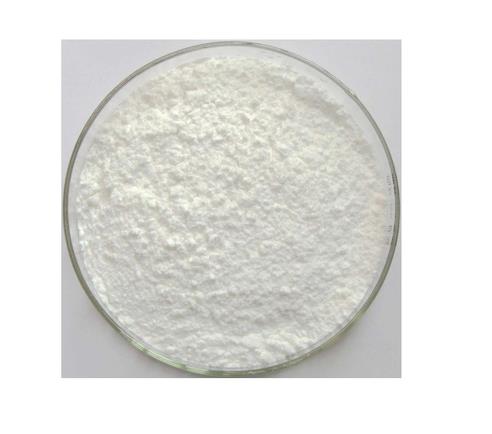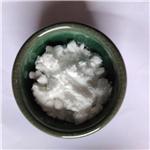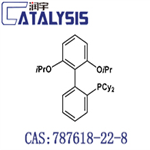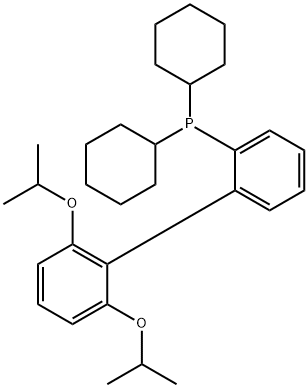The application and synthesis of 2-Dicyclohexylphosphino-2',6'-diisopropoxybiphenyl
Mar 27,2023
2-Dicyclohexylphosphino-2',6'-diisopropoxybiphenyl is a kind of large sterically hindered phosphine ligand, which can be used for the palladium catalyzed cross coupling reaction of aminoethyl trifluoroborate and electron-deficient aryl bromide. Its appearance is as follows:

Figure 1 Appearance of 2-Dicyclohexylphosphino-2',6'-diisopropoxybiphenyl
Chemical synthesis
2-Dicyclohexylphosphino-2',6'-diisopropoxybiphenyl can be synthesized by single step according to previous work [1]. An oven-dried 100 mL round-bottomed flask equipped with a magnetic stirbar and a reflux condenser was capped with a rubber septum, fitted with an argon inlet adapter, and then evacuated and backfilled with argon (this sequence was repeated three times). The reaction vessel was charged with 1,3-diisopropoxybenzene (1.5 g, 7.7 mmol, 1.1 equiv.), dry hexane (16 mL) and n-butyllithium (3.2 mL, 2.5 M solution in hexanes, 8.0 mmol, 1.2 equiv.). The reaction mixture was heated to reflux for 2.5 h (bath temperature of 80 °C). Maintaining the reaction mixture at reflux, neat 2-bromochlorobenzene (0.8 mL, 6.8 mmol, 1.0 equiv) was added dropwise via syringe over 50 min with vigorous stirring. The resulting suspension was stirred at 80 °C for an additional 1 h. At this point the reaction mixture was cooled to room temperature.
Analysis (GC) of a reaction aliquot (quenched by addition to ethanol) indicated that complete consumption of the 2-bromochlorobenzene and clean conversion to 2-bromo-2',6'-diisopropoxybiphenyl had occurred. Dry THF (16 mL) was added via syringe through the septum and the resulting reaction mixture was cooled to -78 °C. n-Butyllithium (3.1 mL, 2.5 M solution in hexanes, 7.7 mmol, 1.1 equiv.) was added dropwise via syringe over 15 min. The resulting mixture was stirred at -78 °C for 1 h. Neat chlorodicyclohexylphosphine (1.5 mL, 6.8 mmol, 1.0 equiv) was then added via syringe. The reaction mixture was stirred at -78 °C for 1 h and then allowed to slowly warm to room temperature. The mixture was filtered through a pad of flash silica gel topped with a layer of celite, eluting with ethyl acetate (400 mL). The filtrate was concentrated under reduced pressure to provide a yellow solid. Recrystallization from ethanol provided (2.24 g, 71%) of 2 as a white solid, 2-(2',6'-Diisopropoxyphenyl)phenyldicyclohexylphosphine (2), yield (2.24 g, 71%) mp 123-124 °C.
The spectroscopic data is as follows: 1H NMR (400 MHz, C6D6) δ: 7.53 (d, J = 7.6 Hz, 1H), 7.30-7.14 (m, 4H), 6.49 (d, J = 8.3 Hz, 2H), 4.22 (sept, J = 6.0 Hz, 2H), 1.93-1.62 (m, 12H), 1.41-1.14 (m, 10H), 1.12 (d, J = 6.0 Hz, 6H), 0.96 (d, J = 6.0 Hz, 6H). 13C NMR (100 MHz, C6D6) δ: 157.0, 144.7, 144.4, 137.8, 137.6, 132.4, 132.3, 131.9, 131.9, 126.4, 123.9, 123.9, 106.6, 70.3, 35.2, 35.0, 30.9, 30.8, 30.7, 30.6, 28.0, 28.0, 27.9, 27.3, 22.6, 22.3 (observed complexity due to P-C splitting; definitive assignments have not been made) 31P NMR (121 MHz, C6D6) δ: -8.84. IR (neat, cm-1): 2919, 2848, 1594, 1461, 1447, 1380, 1246, 1135, 1113, 1061. Anal. Calcd for C30H43O2P: C, 77.22; H, 9.29. Found: C, 77.22; H, 9.41.
The optimal catalyst/ligand loadings were found to be 2 mol % of Pd(OAc)2 and 4 mol % of ligand. The use of 2-Dicyclohexylphosphino-2',6'-diisopropoxybiphenyl as ligand provided the highest product ratios.
[2]Zarzuelo et al. 2-Dicyclohexylphosphino-2',6'-diisopropoxy-1,1'-biphenyl. e-EROS Encyclopedia of Reagents for Organic Synthesis, 2010, 1-6.
[3]Milne et al. An extremely active catalyst for the Negishi cross-coupling reaction. J. Am. Chem. Soc. 2004, 126, 13028.
[4]Dreher et al. Suzuki-Miyaura Cross-Coupling Reactions of Primary Alkyltrifluoroborates with Aryl Chlorides. J. Org. Chem. 2009, 74, 3626.
- Related articles
- Related Qustion
- 2-Dicyclohexylphosphino-2',6'-diisopropoxybiphenyl: properties, applications and safety Dec 19, 2023
2-Dicyclohexylphosphino-2',6'-diisopropoxybiphenyl is a white powder phosphine ligand used in asymmetric catalysis, toxic upon exposure, requiring stringent handling and storage precautions.
Pseudouridine (Ψ;5-ribosyluracil) is a C-glycosyl pyrimidine that consists of uracil having a beta-D-ribofuranosyl residue attached at position 5.....
Mar 27,2023Nucleoside DrugsZnO is a white powder that is insoluble in water. It is used as an additive in numerous materials and products including cosmetics, food supplements, rubbers, plastics, ceramics, glass, cement, etc.....
Mar 28,2023Inorganic saltsYou may like
2-DICYCLOHEXYLPHOSPHINO-2',6'-DIISOPROPOXYBIPHENYL manufacturers
- Dicyclohexyl(2',6'-diisopropoxy-[1,1'-biphenyl]-2-yl)phosphine…
-
![787618-22-8 Dicyclohexyl(2',6'-diisopropoxy-[1,1'-biphenyl]-2-yl)phosphine…](/ProductImageEN/2023-10/Small/6d824800-20bb-457b-9278-74be012996b5.jpg)
- $8.00 / 5g
- 2024-02-23
- CAS:787618-22-8
- Min. Order: 5g
- Purity: 0.98
- Supply Ability: 100kg
- 2-Dicyclohexylphosphino-2',6'-di-i-propoxy-1,1'-biphenyl
-

- $30.00 / 1KG
- 2023-09-06
- CAS:787618-22-8
- Min. Order: 50KG
- Purity: 99%
- Supply Ability: 500000kg
- 2-Dicyclohexylphosphino-2',6'-di-i-propoxy-1,1'-bipheny
-

- $0.00 / 100g
- 2023-07-27
- CAS:787618-22-8
- Min. Order: 1KG
- Purity: 0.98
- Supply Ability: 500kg





